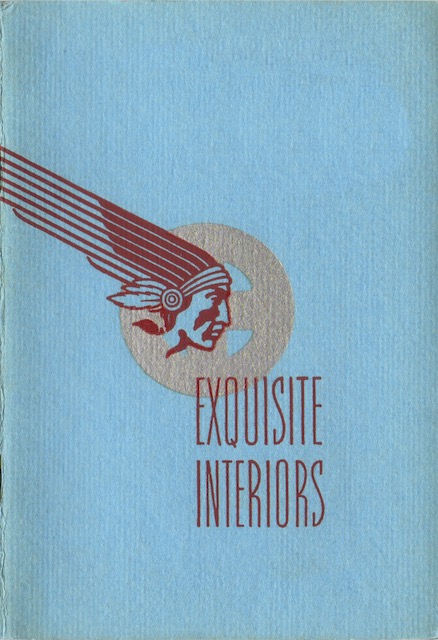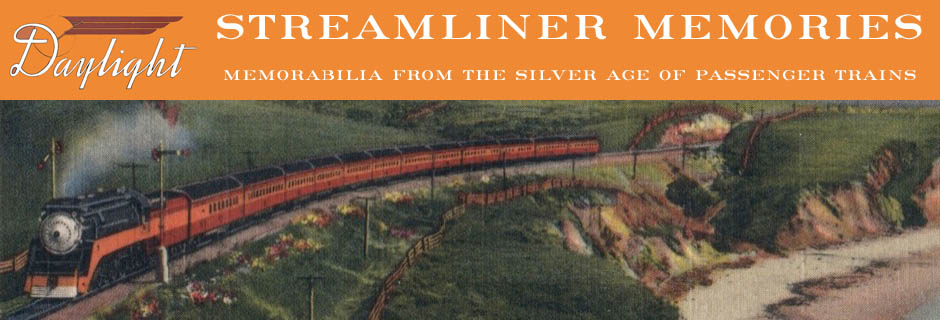We’ve previously seen an elegant booklet introducing the Santa Fe’s first Super Chief, a rather ugly train consisting of heavyweight Pullmans towed by flat-faced Diesels known as 1 and 1A (but sometimes called Mutt & Jeff). That train was introduced in 1936 as Santa Fe’s hasty response to the Union Pacific’s City of Los Angeles.
 Click image to download a 7.2-MB PDF of this 28-page booklet.
Click image to download a 7.2-MB PDF of this 28-page booklet.
Today’s booklet was released for the first streamlined Super Chief, which was introduced almost exactly a year after the non-streamlined version. While I am sure other booklets covered the quality food and comfortable sleeping rooms on the train, this one focused on the interiors, and most importantly the rare woods used to decorate the cars.
The Budd-built train interiors were designed by architect Paul Cret and his associates. Cret, the booklet notes, had also designed the Federal Reserve Board building and Folger Shakespeare Library in Washington, DC, but he also helped design Cincinnati Union Terminal and, being located in Philadelphia, was the Budd Company’s first choice for designing streamlined trains such as the zephyrs and chiefs.
The dining room was veneered in bubinga (an African rosewood), a hardwood tree from West Africa. The lounge ceiling was ribbon prima vera, also known as white mahogany, while the walls beneath the windows were paneled in black birdseye cypress. The bar in the lounge was decorated with zebra wood, also known as zingana. Behind the bar, Brazilian rosewood, ebonized maple, and other woods were used to create an inlay portraying a kachina doll.
Individual bedrooms were decorated with one or more of several woods: aspen; avodire, another mahogany from West Africa; gum wood; Macassar ebony from Indonesia; satinwood from Ceylon; teak from Burma; and white harewood (sycamore). All of these woods were flexwood, thin veneers mounted on the walls like wallpaper. This saved weight and expense as very little of any type of wood was needed for the train.
Unfortunately, none of the photos in this booklet are in color, so they only hint about the true beauty of these interior designs. At least one car from the train still exists and is in the Colorado Railroad Museum in Golden. However, it is generally not open to the public so I don’t know how well the flexwood veneers have held up in the 86 years since it was built.
